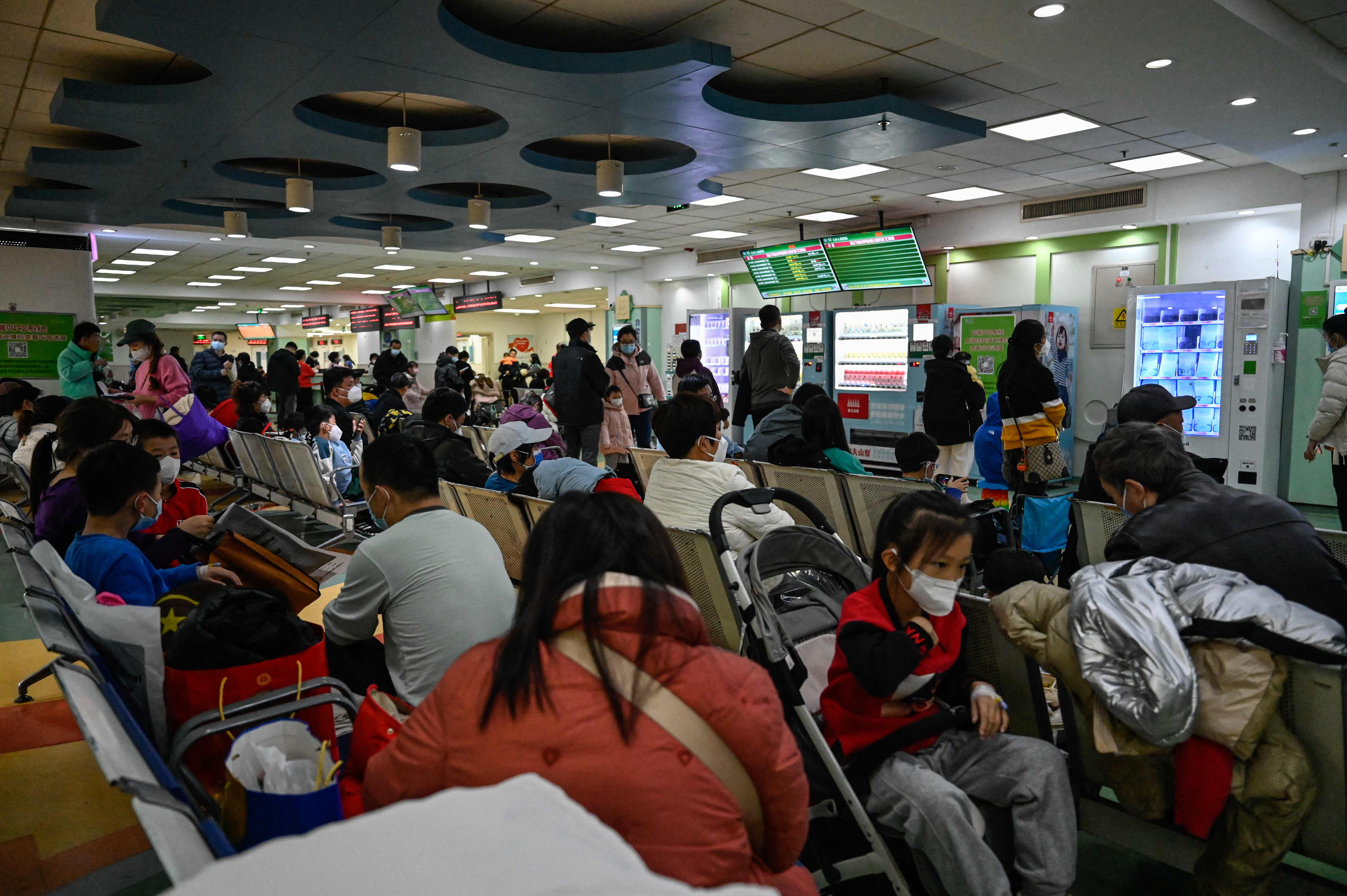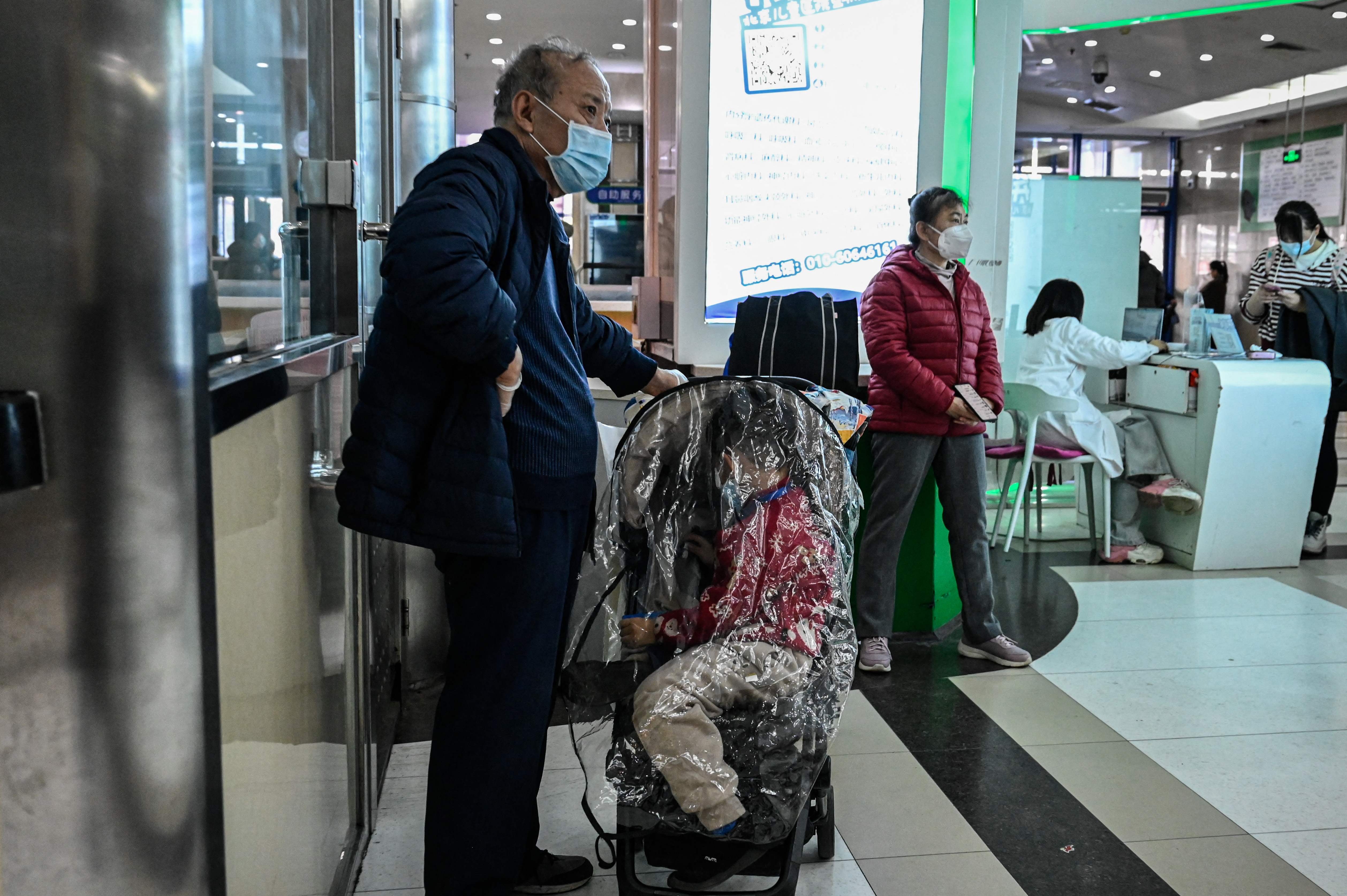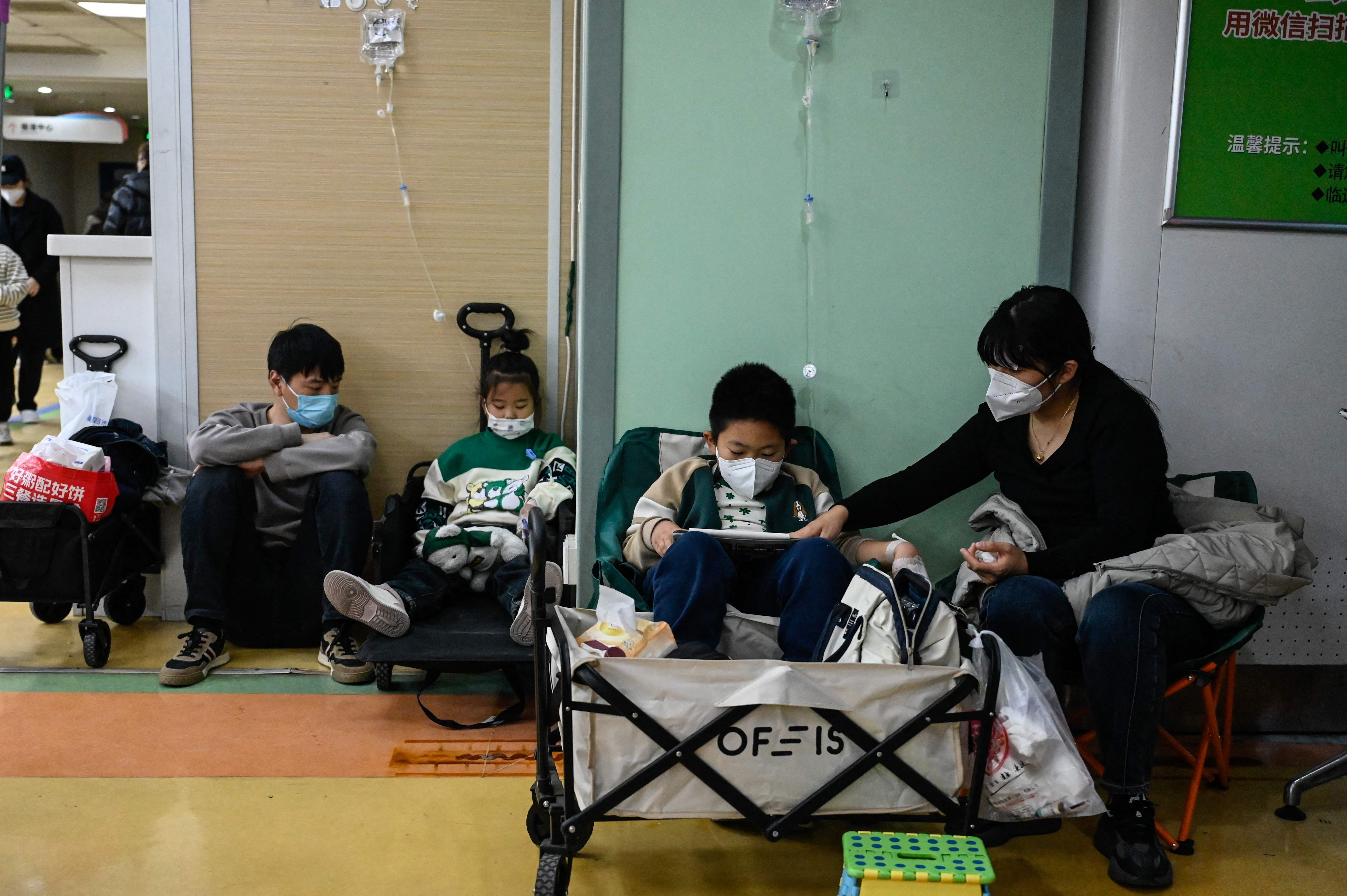WHO asks China to provide more details on spike in pneumonia cases among children
UN health agency requests data on pneumonia cases in children and respiratory illnesses while saying link between them remains unclear

The World Health Organisation (WHO) has officially requested China to share detailed information about respiratory illnesses and reported clusters of pneumonia in children.
The request by WHO on Wednesday comes as Chinese authorities said that there was an increase in the number of respiratory illnesses.
There are reports of hospitals in northern China facing an increase in paediatric visits as the winter season sets in, with one children’s hospital director saying on Saturday that his staff are overwhelmed with patients.
The WHO cited a 13 November press conference of the National Health Commission in saying that there has been an increase in “influenza-like illness” in northern China since mid-October, unlike the past three years.
It also pointed to media and global infectious disease monitoring service ProMED in saying there were reports of an “undiagnosed pneumonia in children in northern China”.
The UN’s health agency, however, said it was unclear if there was any link between clusters of undiagnosed pneumonia and a rise in respiratory infections.
“It is unclear if these are associated with the overall increase in respiratory infections previously reported by Chinese authorities, or separate events,” it said.
The WHO has “requested additional epidemiologic and clinical information, as well as laboratory results from these reported clusters among children”.

“It is not at all clear when this outbreak started, as it would be unusual for so many children to be affected so quickly,” said ProMED, adding that reports of illness among children suggest “some exposure at the schools”.
It said it awaited further information about the scope of the issue and that it was too early to speculate.
The Beijing Aviation General Hospital on Friday said that its paediatrics unit had grappled with pneumonia and flu cases since the beginning of autumn. There was a 30-50 per cent uptick in visits in the same period, compared to previous years.
In Tianjin Children’s Hospital staff have been overwhelmed, said its director Liu Wei in a letter published on WeChat. In the last 24 hours, more than 13,171 patients were admitted to the hospital’s two campuses, the letter said.
The onset of novel diseases, especially potential pandemic-causing strains like new flu viruses, often begins with undiagnosed clusters of respiratory illnesses. Instances such as Sars and Covid-19 initially surfaced as atypical forms of pneumonia.

While scientists said the situation warranted close monitoring, they added that they are not yet convinced that the recent respiratory illnesses spike signals the start of a new global outbreak.
Authorities of China’s National Health Commission on 13 November said the increase in respiratory diseases was due to the lifting of Covid lockdown restrictions.
Other countries have also seen a jump in respiratory diseases such as respiratory syncytial virus (RSV) when pandemic restrictions ended.
David Heymann of the London School of Hygiene and Tropical Medicine said that there was a likely background of seasonal respiratory infections.
“The challenge is to discern the outbreaks and determine the cause,” Dr Heymann said in a statement, adding that genetic sequencing and isolating cases would be critical. He had led the WHO’s response to the 2002-03 Sars outbreak.
Francois Balloux of UCL said that the current wave of disease in China was likely due to respiratory illnesses like flu, RSV or a bacterial infection.
He said China was probably experiencing a significant wave of childhood infections as this was the first winter since lockdown restrictions were lifted, which likely reduced children’s immunity to common bugs.
“Unless new evidence emerges, there is no reason to suspect the emergence of a novel pathogen,” Mr Balloux said.
The WHO said it also requested details about recent trends in the “circulation of known pathogens including influenza, Sars-CoV-2, RSV and mycoplasma pneumoniae, and the current burden on health care systems”.
It said it was in contact with clinicians and scientists in China through its partnership programme to keep an eye on the situation.
It is rare for the UN health agency to publicly seek more detailed information from countries, as such requests are typically made internally. The agency’s China office, however, said this was a “routine” request.
“While WHO seeks this additional information, we recommend that people in China follow measures to reduce the risk of respiratory illness,” the agency said.
It suggested people in China get vaccinated, isolate if they are feeling ill, wear masks if necessary and get medical care as needed.
Additional reporting by agencies
Join our commenting forum
Join thought-provoking conversations, follow other Independent readers and see their replies
Comments
Bookmark popover
Removed from bookmarks